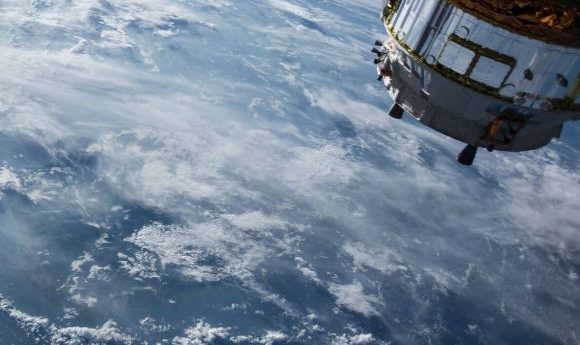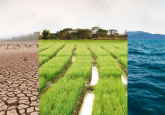Satellites are key to monitoring global carbon dioxide levels

New research has demonstrated how satellite-based Earth observation could allow for more accurate monitoring of ocean carbon dioxide levels and consequently evoke positive policy change.
The rising carbon dioxide levels are an increasing concern for climate scientists and policy makers. Consequentially, there is a crucial demand for an accurate method to routinely quantify global carbon dioxide levels stored in oceans and on land.
Over recent years, advances in technology, knowledge and international cooperation have allowed researchers to measure global carbon dioxide levels more accurately than ever before. However, we are far from reaching the full potential of climate monitoring methods.
In a recent review, published in Frontiers in Ecology and the Environment, researchers have described how satellite-based Earth observation is the key to filling the current gaps in knowledge and provide consistent and accurate measurements of oceanic carbon dioxide levels.
Monitoring the ocean’s carbon dioxide levels is particularly important as they cover over 70% of the Earth’s surface and play a crucial role in maintaining global climate through carbon dioxide absorption.
As atmospheric carbon dioxide levels increase, more carbon dioxide is stored in the ocean. This alters the ocean chemistry and ecology, resulting in short- and long-term impacts on marine ecosystems.
“Monitoring carbon uptake by the oceans is now critical to understand our climate and for ensuring the future health of the animals that live there,” explained lead author Jamie Shutler (University of Exeter, UK). “By monitoring the oceans we can gather the necessary information to help protect ecosystems at risk and motivate societal shifts towards cutting carbon emissions.”
- Mapping the course of climate change
- Manipulating crops to cope with climate change
- Prehistoric mega-herbivore decline: a case of climate not primate
The researchers described cases where satellites, originally intended to monitor wind or terrestrial gas emissions, were able to observe the movement of carbon dioxide between the ocean and the atmosphere, as well as measure carbon dioxide emissions as they disperse over the ocean.
Future applications of these satellite-based observation missions are expected to provide further opportunities for knowledge, including studying the internal circulation of the oceans and monitoring the health of ocean life.
The researchers believe that there is a need for a ‘robust network’ that would combine data from in situ and satellite-based Earth observations, in order to routinely observe the oceans and accurately monitor it’s carbon dioxide levels.
“Putting surface ocean carbon data together in the Surface Ocean CO2 Atlas after carrying out quality checks has facilitated studies of the ocean carbon sink,” explained co-author Dorothee Bakker (University of East Anglia, Norwich, UK). “These studies are of critical importance as the oceans absorb a quarter of the carbon dioxide emissions from human activity.”
Developing an accurate and reliable solution to monitor global ocean carbon dioxide levels is vital for supporting policies and conservation that will allow us to reverse the effects of the ”long-term man-made climate disaster”. However, this will be unsuccessful without the continued effort from all parties.





